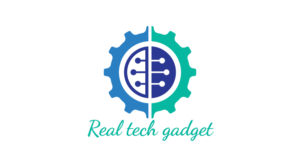Ensuring site safety is critical in sectors like manufacturing and construction. The introduction of AI in site safety management has ushered in a new era of improved safety measures that are revolutionizing workplace operations. Worksite safety management is being revolutionized by AI’s capacity to prevent and respond to safety events, hence improving working conditions in the workplace.
viAct has a mobile AI monitoring solution that supports a safe construction environment. It minimizes the risk of injuries at the workplace and adheres to safety regulations. It reduces downtime and lowers the cost associated with accidents. In this article, we will explore the applications and challenges associated with Artificial Intelligence in site safety.
Applications of AI in Site Safety
Following are the applications of Artificial Intelligence in site safety:
- Risk Assessment: AI examines past data to spot trends and foresee possible risks. Proactive action makes timely interventions possible. By using artificial intelligence (AI) to predict equipment breakdowns before they happen, predictive maintenance makes sure that machinery is always operating safely.
- Use of computer vision: Sensor-equipped smart helmets and vests keep an eye on employees’ vital signs and the surrounding environment, warning them of possible risks like heat exhaustion or exposure to harmful gases. Artificial intelligence (AI)-powered cameras are able to identify risky activities, such as workers not donning safety gear or going into dangerous areas, and promptly notify managers. Computer vision systems alter the management of workplace safety.
- Automated alerts: AI systems can instantly notify emergency responders and site managers of incidents, providing real-time data to coordinate swift action. AI-powered virtual assistants walk employees through emergency protocols, making sure they make the right decisions at crucial times.
- Training: Workers can practice responding to numerous safety hazards in realistic training settings created by combining AI and virtual reality (VR). Chatbots trained on safety procedures can reply to the queries of the employees. Employees receive maintenance instructions about the repair.
Challenges associated with AI implementation
The connected technology becomes prone to cyber disruptions. So, measures are to be taken to control that. There is a heavy cost involved as there is a need for high-quality data for AI algorithms. Unfair practices can take place while implementing Artificial Intelligence. It can pose a risk to the safety of the workers. The advancements will ensure a safe environment at the workplace and will continue evolving. Ethical concerns may arise due to difference in AI algorithms which has to be properly managed. Real-time alerts can ensure proactive approaches towards continuous monitoring of protocols.
Conclusion
By providing tools that track and react to safety issues with previously unheard-of accuracy and speed, artificial intelligence is transforming site safety management. AI will become more and more important in making workplaces safer as technology develops. Industries can safeguard their most important resource, i.e., the workforce by the adoption of Artificial Intelligence. The purpose of incorporating AI into site safety management is to promote a culture of safety where all employees can carry out their jobs without worrying about getting hurt. This goes beyond merely following rules or cutting expenses.
